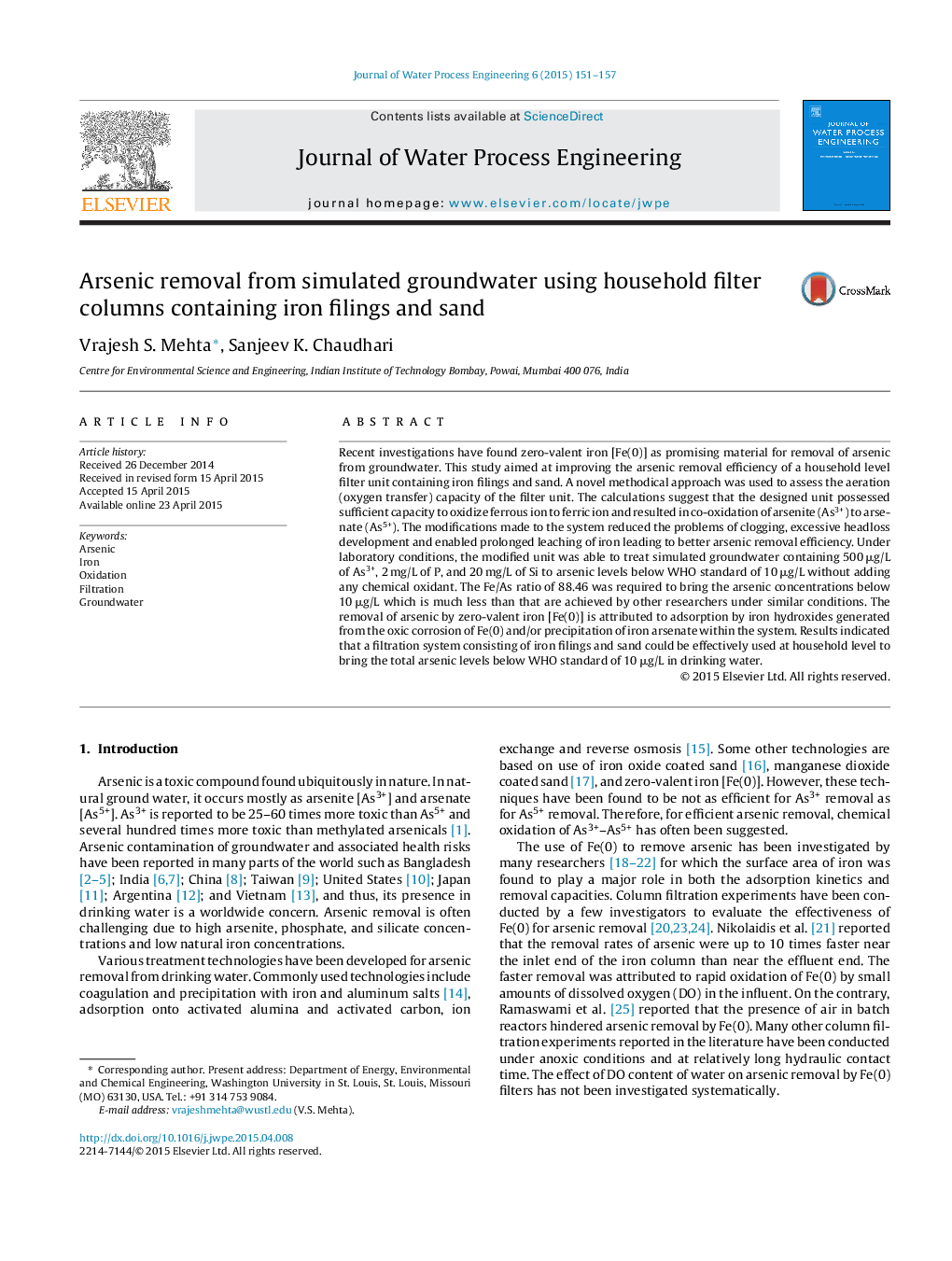| کد مقاله | کد نشریه | سال انتشار | مقاله انگلیسی | نسخه تمام متن |
|---|---|---|---|---|
| 232664 | 465296 | 2015 | 7 صفحه PDF | دانلود رایگان |
• Household filter unit can effectively remove arsenic below WHO standard of 10 μg/L.
• Oxygen can efficiently co-oxidize As3+–As5+ during Fe2+–Fe3+ oxidation.
• Arsenic removal occurred via adsorption (HFO) and/or precipitation (iron arsenate).
Recent investigations have found zero-valent iron [Fe(0)] as promising material for removal of arsenic from groundwater. This study aimed at improving the arsenic removal efficiency of a household level filter unit containing iron filings and sand. A novel methodical approach was used to assess the aeration (oxygen transfer) capacity of the filter unit. The calculations suggest that the designed unit possessed sufficient capacity to oxidize ferrous ion to ferric ion and resulted in co-oxidation of arsenite (As3+) to arsenate (As5+). The modifications made to the system reduced the problems of clogging, excessive headloss development and enabled prolonged leaching of iron leading to better arsenic removal efficiency. Under laboratory conditions, the modified unit was able to treat simulated groundwater containing 500 μg/L of As3+, 2 mg/L of P, and 20 mg/L of Si to arsenic levels below WHO standard of 10 μg/L without adding any chemical oxidant. The Fe/As ratio of 88.46 was required to bring the arsenic concentrations below 10 μg/L which is much less than that are achieved by other researchers under similar conditions. The removal of arsenic by zero-valent iron [Fe(0)] is attributed to adsorption by iron hydroxides generated from the oxic corrosion of Fe(0) and/or precipitation of iron arsenate within the system. Results indicated that a filtration system consisting of iron filings and sand could be effectively used at household level to bring the total arsenic levels below WHO standard of 10 μg/L in drinking water.
Journal: Journal of Water Process Engineering - Volume 6, June 2015, Pages 151–157
